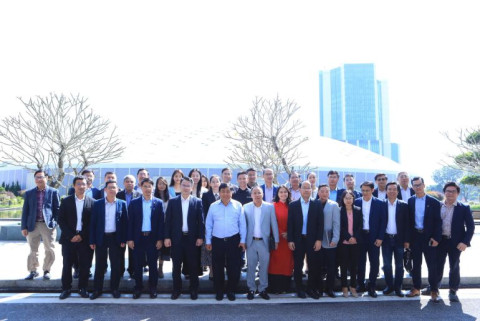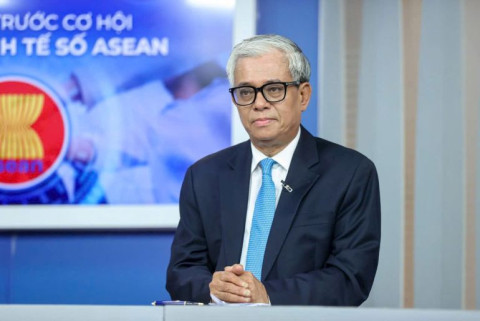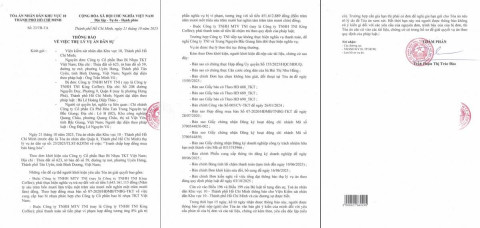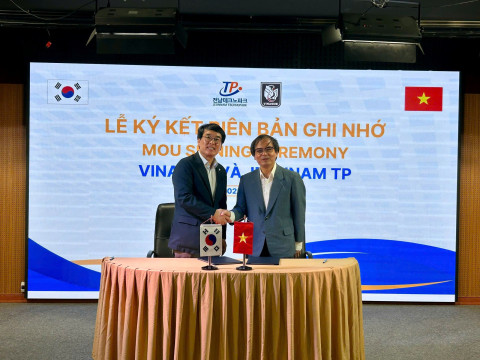When will urban railways in Vietnam truly accelerate?
- 161
- Business
- 20:33 14/08/2024
DNHN - Although the Cát Linh-Hà Đông line has been operational, many urban railway projects are still facing difficulties in terms of progress and financing. To achieve a breakthrough in development, close coordination is needed.
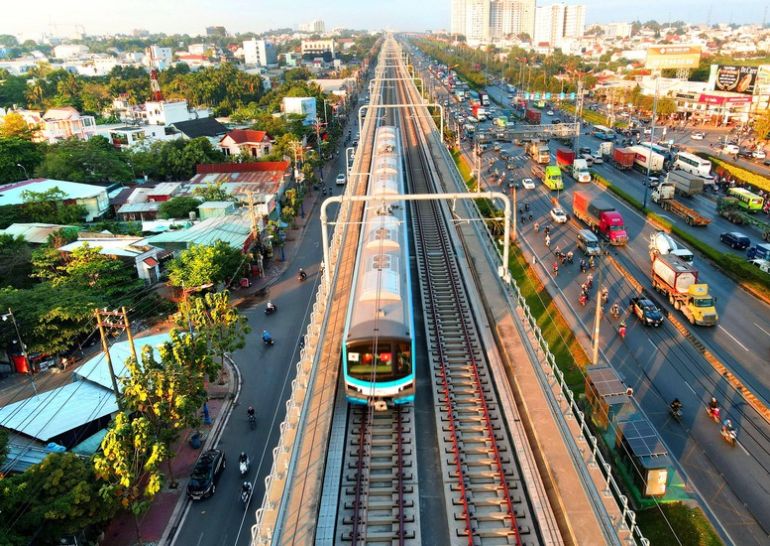
Need for high consensus and the spirit of "just do, no step back"
Urban railways in Vietnam will truly accelerate when projects are implemented with determination and synchronization from all levels of government and relevant agencies. This includes urgently completing investment proposals, applying breakthrough mechanisms, and thoroughly resolving financial and technical issues. Moreover, there needs to be high consensus and the spirit of "just do, no step back" in implementation, while also learning from past projects to avoid repeating mistakes. When these factors are met, the urban railway system will have the opportunity to accelerate and effectively contribute to the sustainable development of public transportation in major cities.
Urban railway projects in Vietnam are on a strong development trajectory, but more time is needed to achieve a breakthrough. Although some urban railway lines, such as the Cát Linh-Hà Đông line, have been put into operation, many other important projects are still under construction and testing. When the main urban railway lines are completed and officially put into use, along with the completion of supporting infrastructure and facilities, this public transportation system will accelerate and bring about a major shift in urban traffic in Vietnam.
The biggest challenge to the acceleration of urban railways is the synchronization between different projects and the effective coordination between relevant agencies. Currently, many projects are still facing issues related to progress and budget, affecting the overall synchronization plan. Once these issues are resolved and urban railway lines operate stably, they will play an important role in reducing traffic congestion and improving urban living quality.
To truly accelerate the development of urban railways in Vietnam, there needs to be strong support from planning policies, synchronized investment, and the participation of private investors. The government needs to intensify financial and legal support measures while accelerating delayed projects. Raising public awareness about the benefits of public transportation and encouraging its use are also important factors for the rapid and sustainable development of urban railways.
After nearly 15 years of waiting, Hanoi has officially put into operation the Nhổn - Hanoi Station urban railway segment, 8.5 km long, including 8 stations. This is the first urban railway line directly invested in and operated by the Hanoi People's Committee, marking an important step in the development of the city's public transportation system.
Although the entire line has not yet been completed and is not directly connected to the Cát Linh-Hà Đông line, this urban railway segment has become a priority choice for many residents. This railway line runs from the suburban area to the center of Hanoi, helping to relieve traffic pressure and meet the increasing travel demands of urban residents.
Conditions necessary for the acceleration of the urban railway system
Currently, the partial operation of the project not only helps to reduce traffic congestion but also provides valuable lessons for the Hanoi People's Committee and relevant units. The experiences from this initial phase will be an important foundation for completing the remaining underground section and implementing new urban railway lines in the future.
Although the project is expected to be fully completed by 2027, the Nhổn - Hanoi Station urban railway project will set a record for delays. With over 18 years of implementation, multiple extensions, and increased investment, this project faces worrying issues. The time taken is almost equivalent to the time it takes for a child to grow up, while the public transportation system in Hanoi and Ho Chi Minh City has not seen significant improvement.
The delays stem mainly from the scale and complexity of the project, along with the investor's limited experience in managing large-scale, high-tech projects. This is a common issue in many countries during the early stages of urban railway development, but a period of 15-20 years to complete a line is still too long and unacceptable.
According to Conclusion No. 49-KL/TW dated February 28, 2023, of the Politburo, Vietnam aims to complete the urban railway network in Hanoi and Ho Chi Minh City by 2035. To achieve this goal, Hanoi needs to complete approximately 76% of the total planned route length within the next 10 years, while Ho Chi Minh City must complete about 183 km by 2035 and an additional 168 km by 2045, bringing the total length to about 351 km.
Currently, the overall investment plan for building the urban railway system in Hanoi and Ho Chi Minh City by 2035 is being closely coordinated by city leaders and the Ministry of Transport for completion. Although the plan is being finalized with many breakthrough mechanisms, achieving the set goals requires learning from the difficulties faced over the past 20 years of urban railway development. The process of building the plan needs to be carried out seriously, comprehensively, and thoroughly, with high political consensus to ensure feasibility and effectiveness.
To achieve rapid development of the urban railway system, there needs to be strong determination from all levels of government and relevant parties. The spirit of "just do, no step back" needs to be clearly communicated to create unity and determination in project implementation. Ensuring synchronization and efficiency during implementation will be a prerequisite for the acceleration of urban railways, similar to the success achieved in the development of expressways in recent times.
These conditions form the basis for the rapid development of urban railways in the near future. With the cooperation of all parties involved and determination in execution, the urban railway system can become an important part of the public transportation strategy in major cities.
Nghe Nhan
Related news
#develop policies

What’s Vietnam’s game plan as President Trump pressures the Fed?
In a move that rattled political circles and financial markets worldwide, U.S. President Donald Trump declared he would sue Federal Reserve Chairman Jerome Powell for “stifling growth” with high interest rates.

Why is there a need for a development proposal in the field of cultural industries?
In the context of globalization and the booming creative economy, cultural industries are increasingly important in national development strategies. Vietnam needs a development proposal in this field to tap into its potential.

Digital transformation in Bình Thuận: An inevitable trend for economic development
Digital transformation is an inevitable trend, and Bình Thuận needs to accelerate the application of technology across various economic sectors.

FDI continues to flow strongly into real estate
Among investment sectors, real estate continues to attract significant FDI. This raises the question of why FDI continues to pour into this sector.
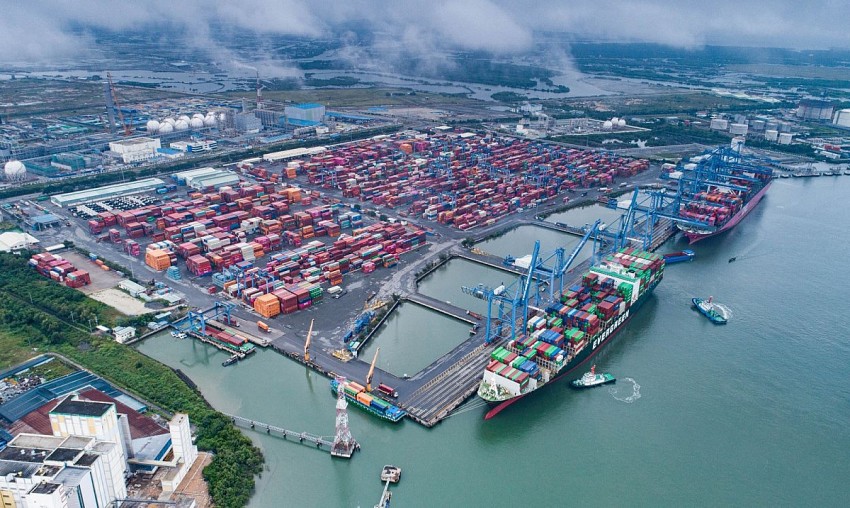
Vietnam will become a maritime power in 2045 for this reason
For Vietnam to become a strong maritime nation, wealthy from the sea as the Party and State have set out, many bold and synchronous solutions are being proposed.

Practical applications of carbon credits in the economy. Part XI: Bridging policy and strategy for the carbon credit market
To develop the carbon credit market, the Government and businesses must improve cooperation and communication. The Government needs to provide clear policies, while businesses must adopt emission reduction strategies and leverage carbon credits.
Đọc thêm Business
Connecting Leaders, Shaping the Future: Strategic Leadership Planning Meeting – CorporateConnections Hanoi A
"Your network is your most powerful flowing asset. It generates value, multiplies opportunities, and accelerates your influence across borders."
Innovative ESG enterprise: Trạm Xe Việt startup proposes solutions to build a green mobility ecosystem
As Vietnam commits to achieving Net Zero by 2050 and tightens emissions standards, the transportation sector faces unprecedented pressure to transform.
Deputy Prime Minister Nguyễn Chí Dũng: “The country’s major challenges weigh heavily on my mind — and we must resolve them together.
On the morning of November 26, 2025, Deputy Prime Minister Nguyễn Chí Dũng chaired a high-level working session at the National Innovation Center (NIC) in Hòa Lạc.
Unitsky String Technologies signs cooperation agreements with three Vietnamese partners, opening a new direction for smart mobility and sustainable development
The signing ceremony took place in Minsk, Belarus, on November 28, 2025.
Before the D‑day to abolish flat‑rate tax: Fear of technology and costs leave small traders struggling to adapt
From 1 January 2026 the flat‑rate tax regime will be abolished. Small business households will be required to declare tax based on actual revenue. MISA supports the transition with technology to help micro‑merchants adapt smoothly and transparently.
Vietnamese enterprises at a crossroads: the impact of a potential US–China deal
As the world closely monitors every shift in US-China relations, emerging signals of a strategic agreement between the two global powers are raising hopes for global economic stability.
HDBank: Impressive profit growth, leading in profitability and advancing international integration
Ho Chi Minh City Development Joint Stock Commercial Bank (HDBank, stock code HDB) announced its consolidated profit before tax for the first 9 months of 2025 reached VND 14,803 billion, marking a 17% increase year-on-year (YoY).
TNI King Coffee sued for over VND 5 Billion in unpaid debts
On October 21, 2025, the People’s Court of District 10 in Ho Chi Minh City officially accepted a civil lawsuit concerning a commercial contract dispute between TKT Vietnam Plastic Packaging Joint Stock Company and TNI King Coffee Co., Ltd.
VINASME and Jeonnam Technopark Sign MOU on technology cooperation, human resource training, and trade promotion
On October 15, 2025, in Hanoi, VINASME and Jeonnam Technopark (Korea) signed an MOU to promote trade, advance technology transfer, and develop human resources between enterprises of both nations.
Vietnamese entrepreneurs strengthen ASEAN connectivity in the digital iIntegration era
On the occasion of Vietnam Entrepreneurs’ Day (October 13), an international event themed “Integration – Innovation – Sustainable Development” was solemnly held in Ho Chi Minh City.




